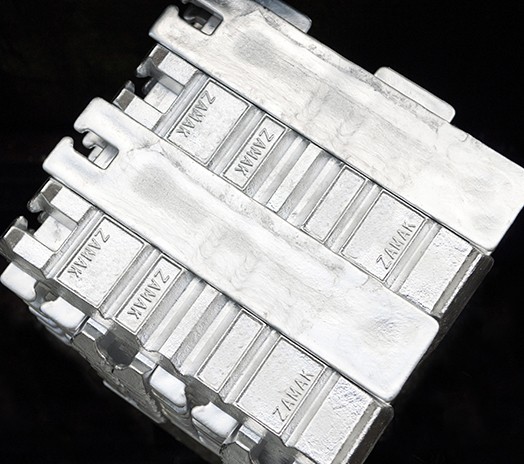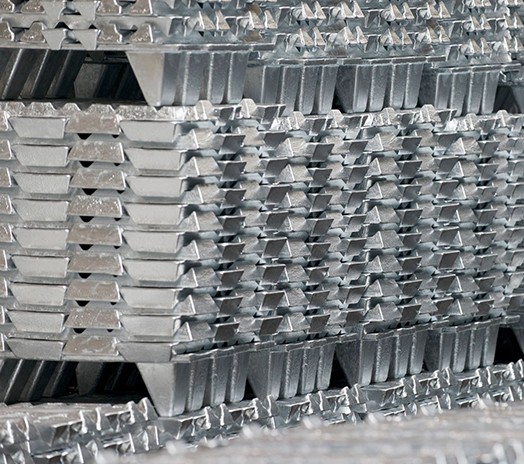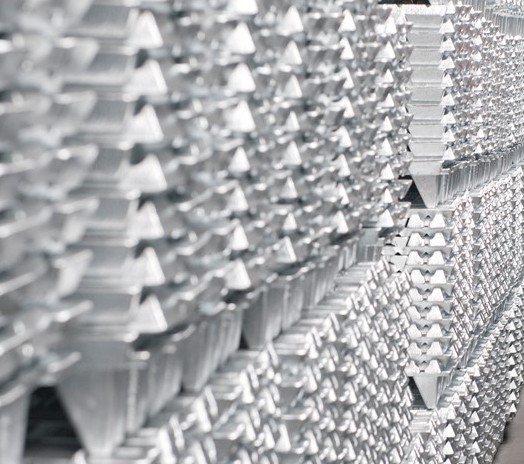ZL0410 / ZnAl4Cu1 / Zamak 5
Zamak 5
Zamak 5 is used especially in the accessories and automobile industries with its high performance in coating, painting and chromating processes.



Zamak 5 has the same composition as zamak 3 with the addition of 1% copper in order to increase strength (by approximately 10%), hardness and corrosive resistance, but reduces ductility. It also has less dimensional accuracy Zamak 5 is more commonly used in Europe.
Zamak 5 is more readily plated, finished, and machined than Zamak 3
When a measure of tensile performance is needed, Zamak 5 castings are recommended.
Zamak 5 (EN1774 European Standard) Chemical Analysis
| Analysis (EN1774) ( %) | Zamak 5 / ZL0410 / ZnAl4Cu1 |
|---|---|
| Al | 3.8 – 4.2 |
| Cu | 0.7 – 1.1 |
| Mg | 0.035 – 0.06 |
| Pb | ≤0.003 |
| Fe | ≤0.02 |
| Cd | ≤0.003 |
| Sn | ≤0.001 |
| Si | ≤0.02 |
| Ni | ≤0.001 |
Zamak 5 General Mechanical Properties
| Mechanical Properties | Metric Value |
|---|---|
| Ultimate Tensile Strength | 331 MPa (270 MPa aged) |
| Yield Strength | 295 MPa |
| Impact Strength | 52 J (56 J aged) |
| Elongation at Fmax | 2% |
| Elongation at Fracture | 3.6% (13% aged) |
| Shear Strength | 262 MPa |
| Compressive Yield Strength | 600 MPa |
| Fatigue Strength (reverse bending 5×108cycles) | 57 MPa |
| Hardness | 91 Brinell |
| Modulus of Elasticity | 96 GPa |
Zamak 5 General Physical Properties
| Physical Properties | Metric Value |
|---|---|
| Solidification Range (melting range) | 380—386 °C |
| Density | 6.7 kg/dm3 |
| Coefficient of Thermal Expansion | 27.4 μm/m-°C |
| Thermal Conductivity | 109 W/mK |
| Electrical Resistivity | 6.54 μΩ-cm at 20 °C |
| Latent Heat (heat of fusion) | 110 J/g |
| Specific Heat Capacity | 419 J/kg-°C |
| Coefficient of Friction | 0.08 |